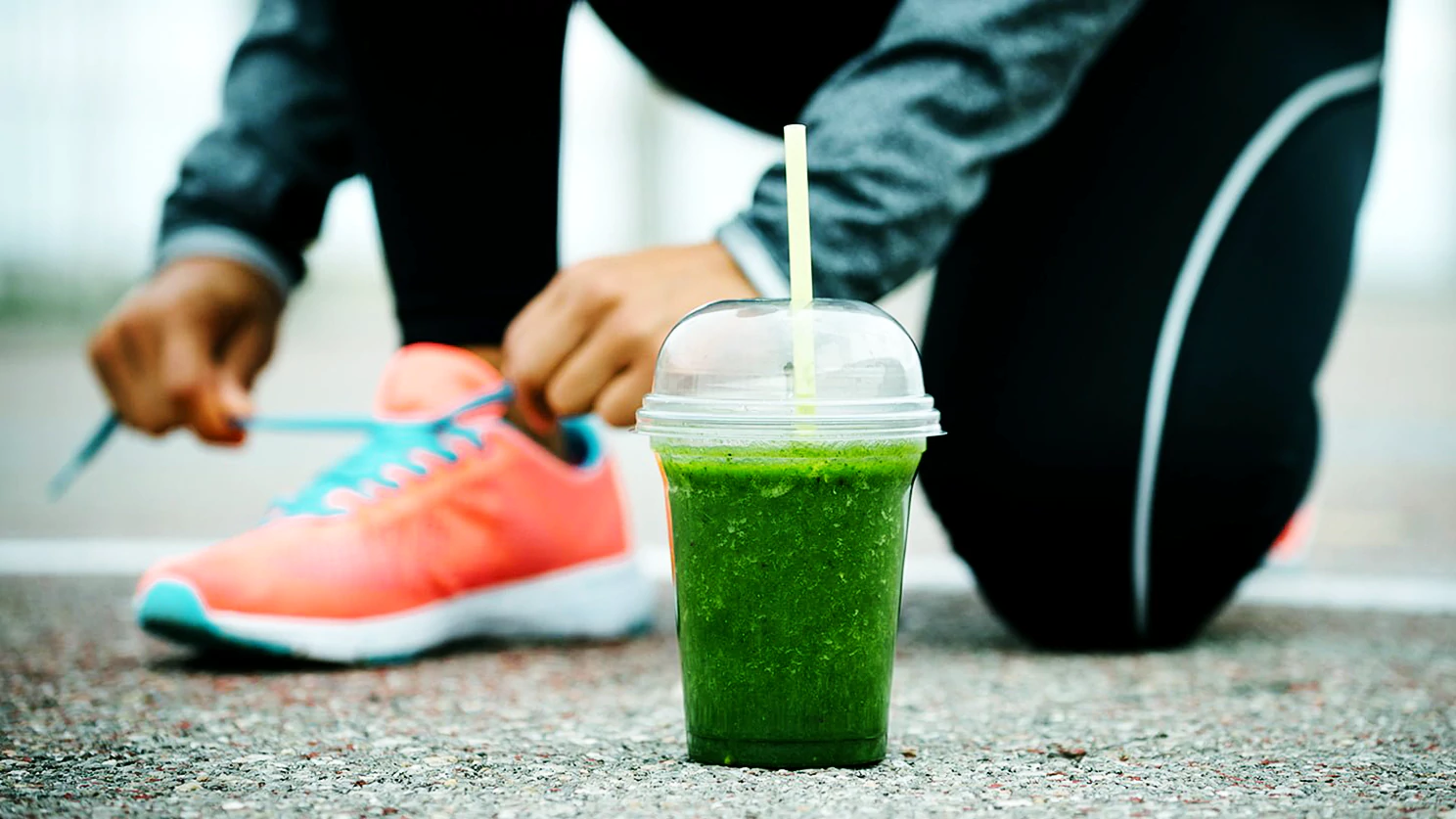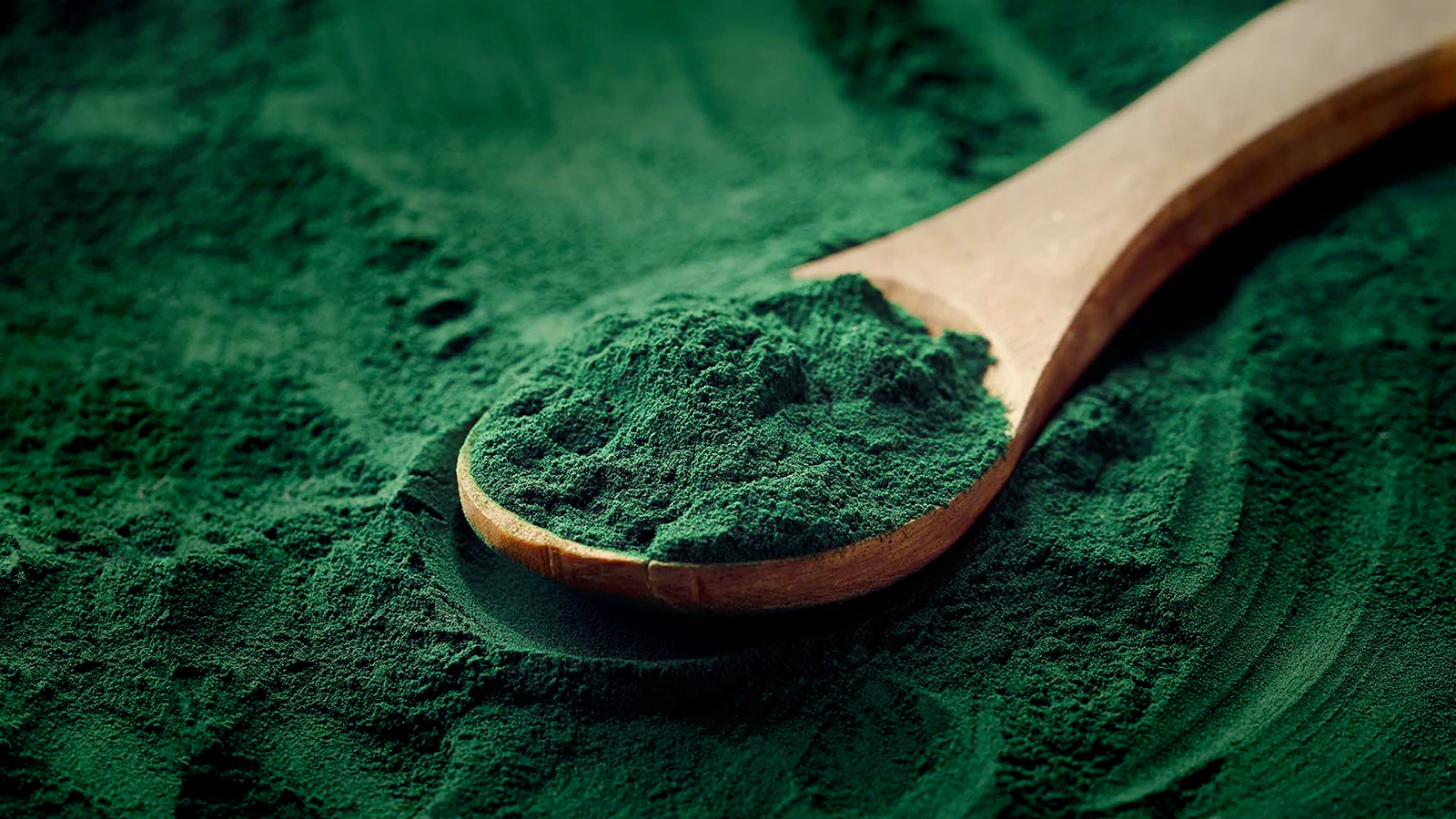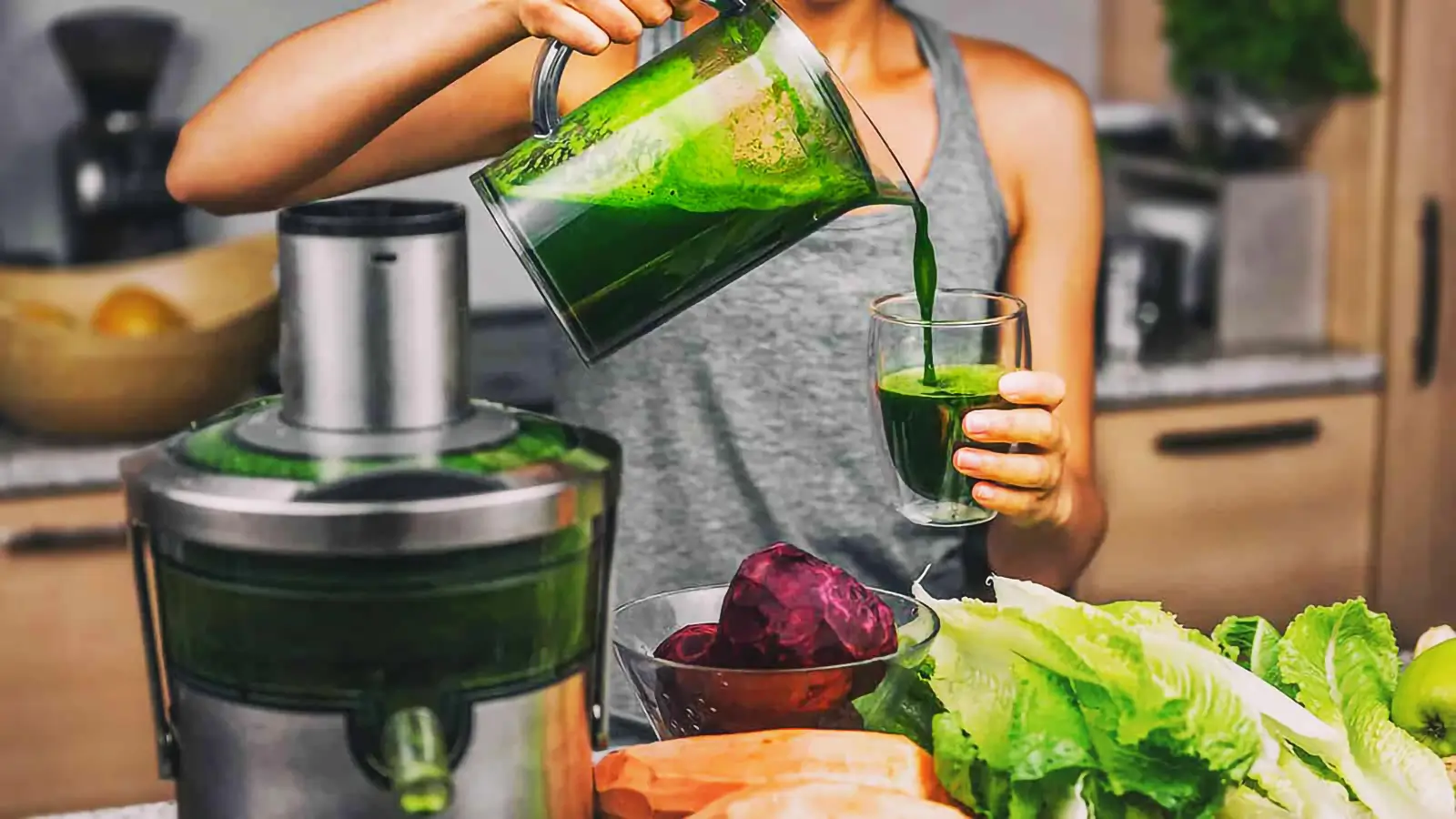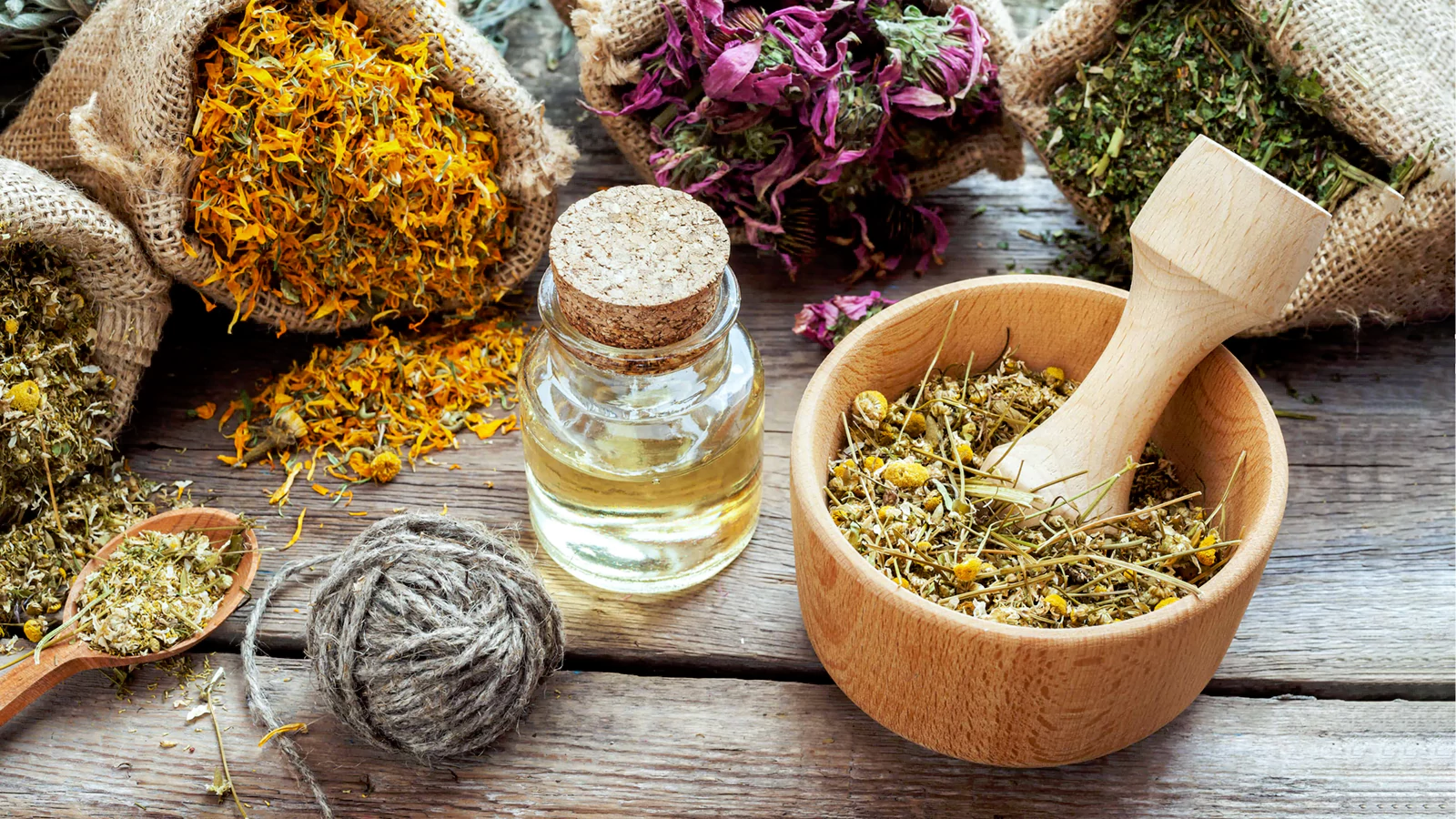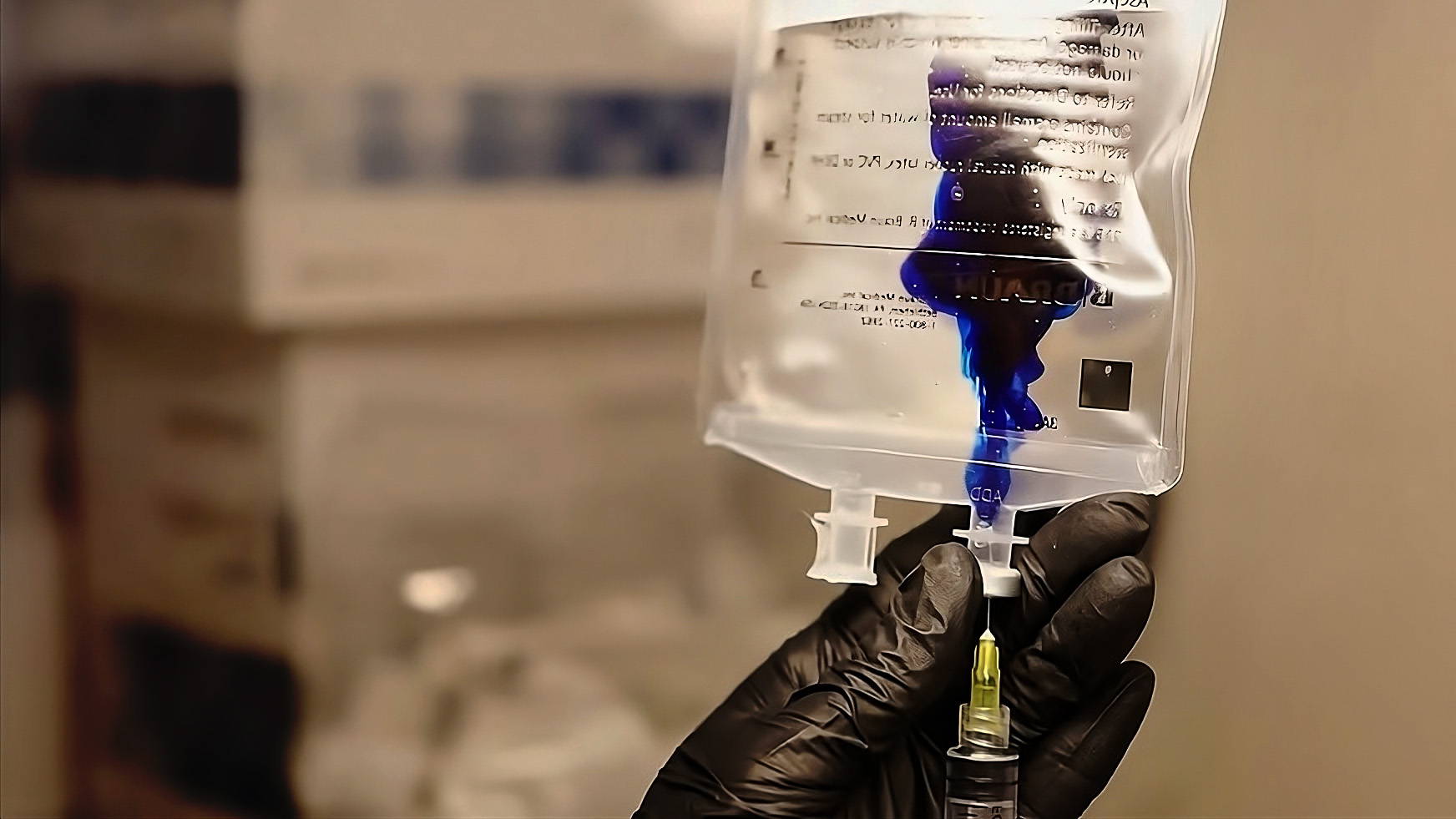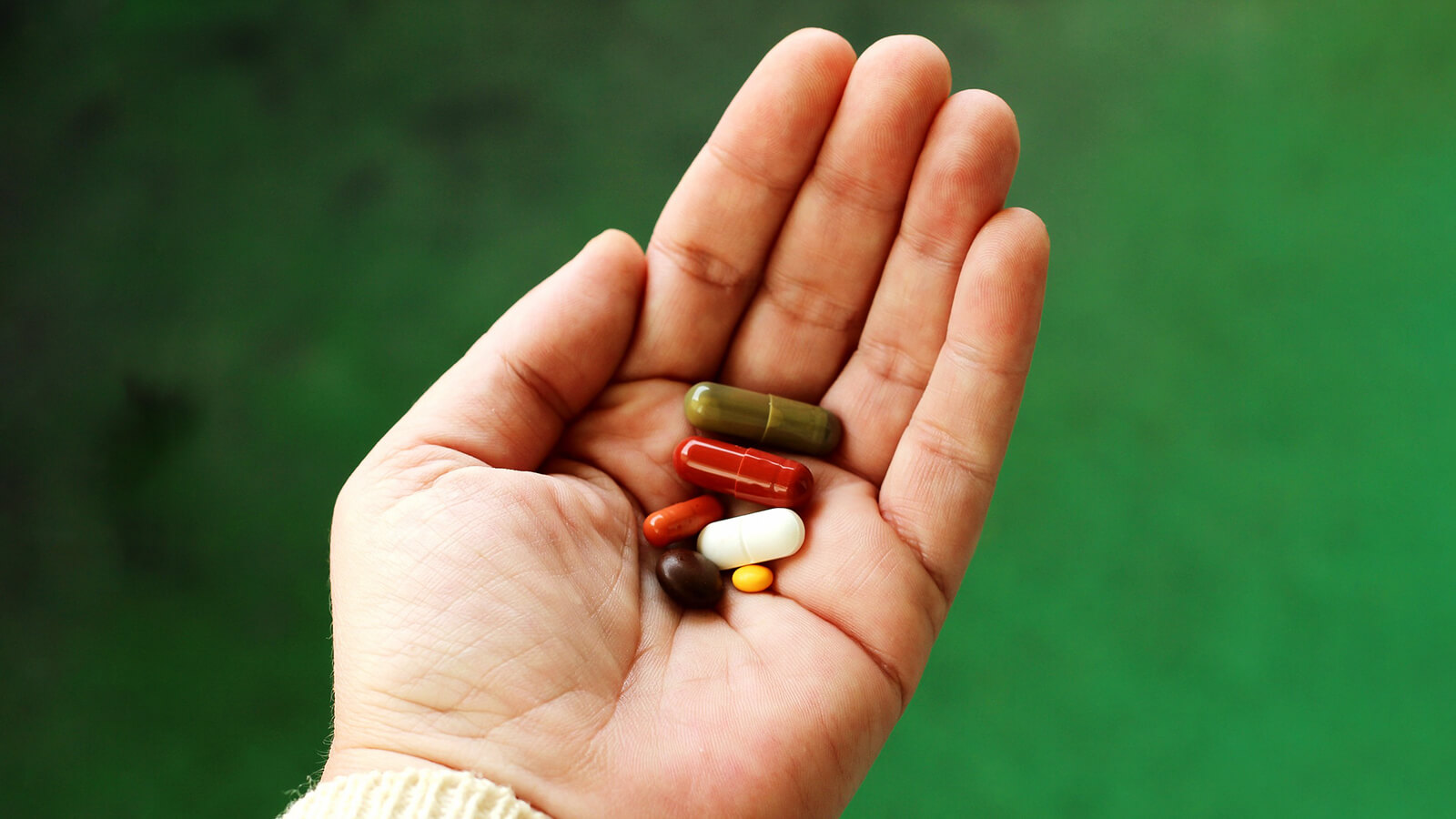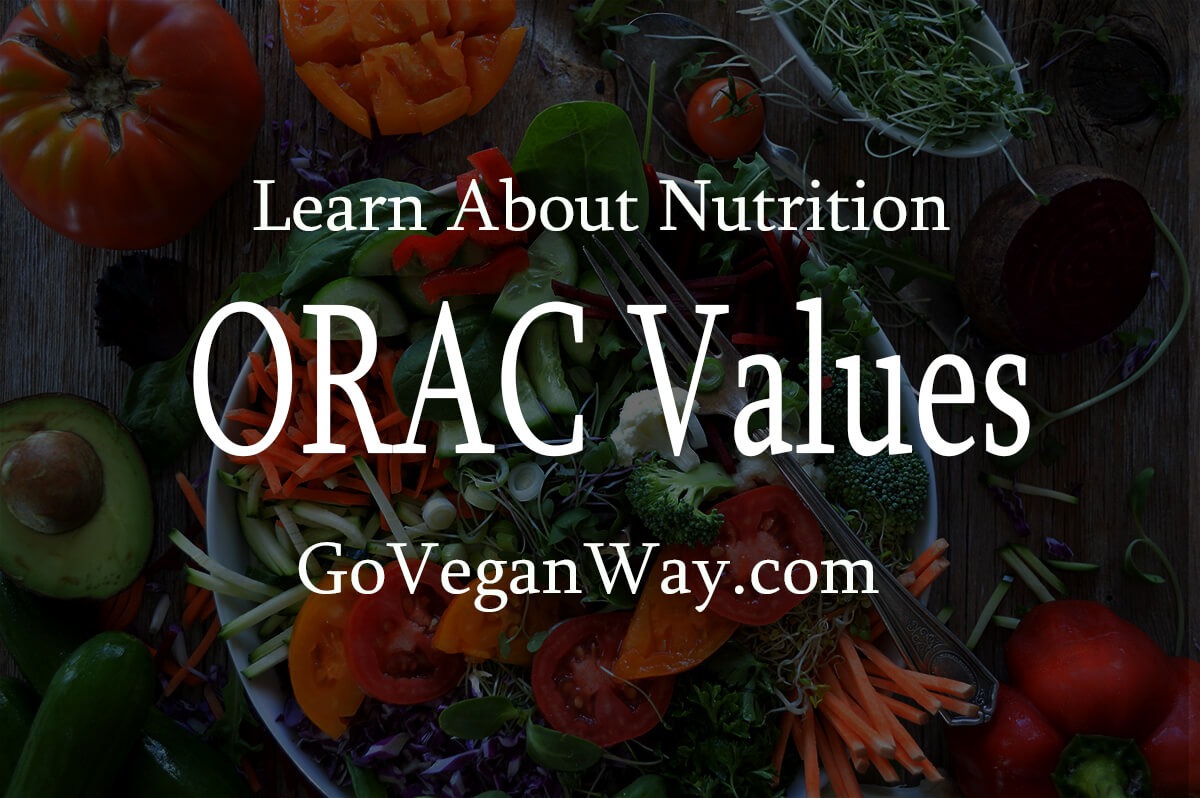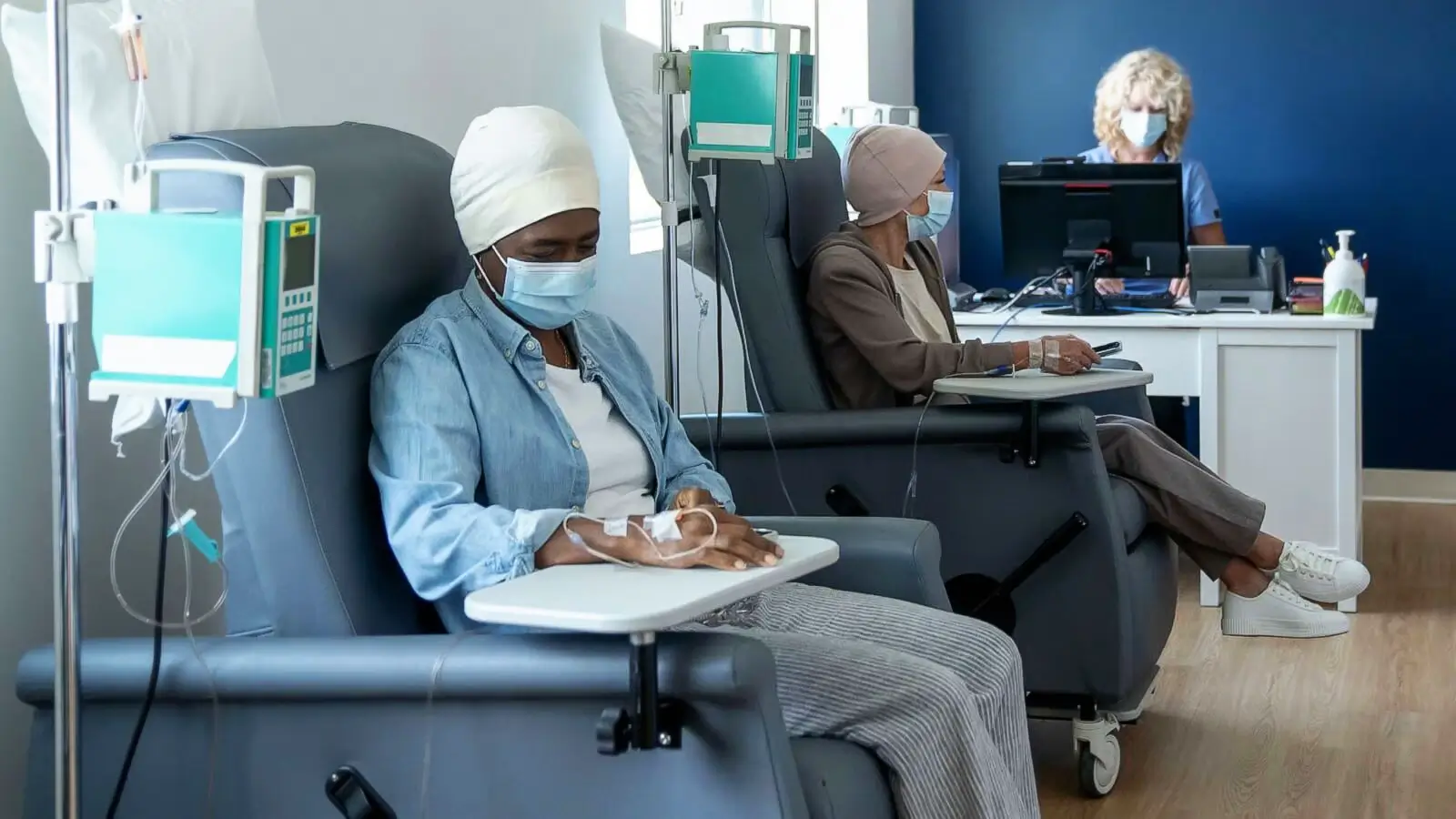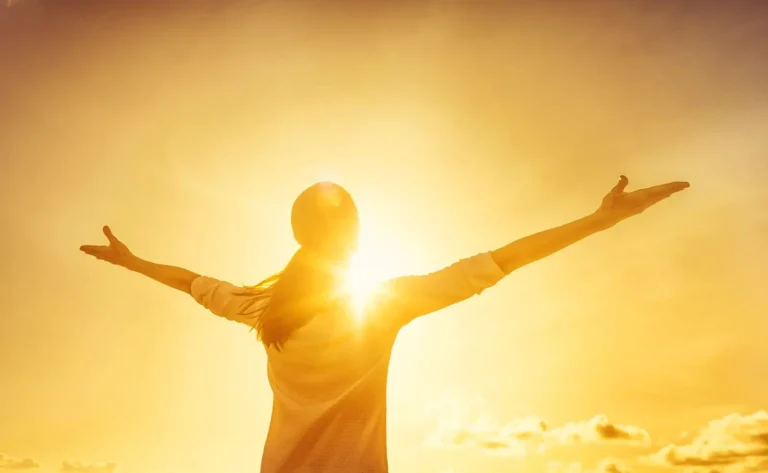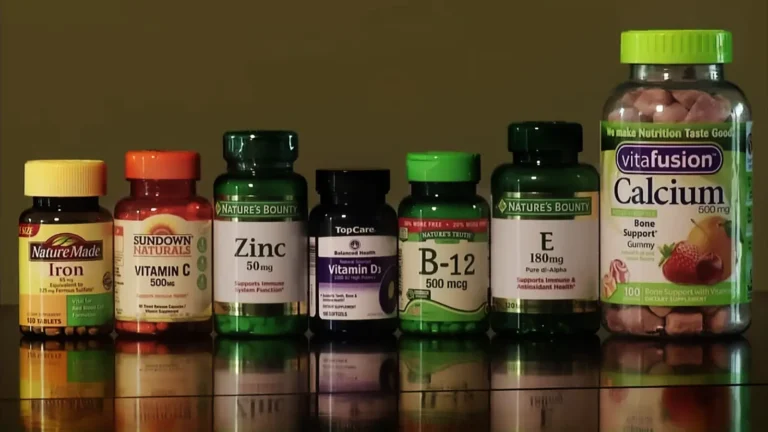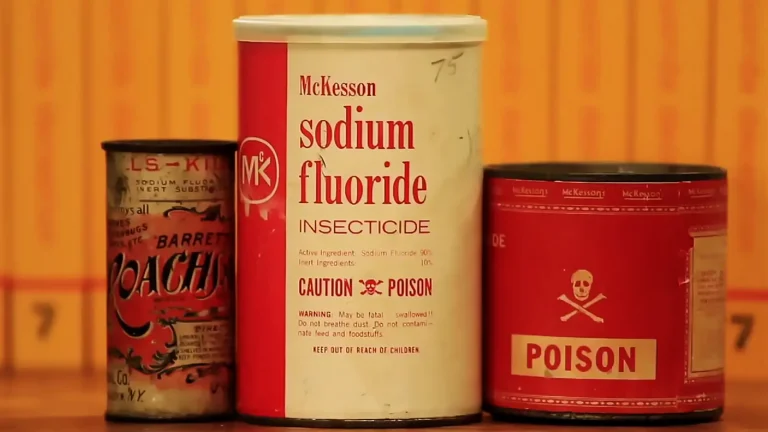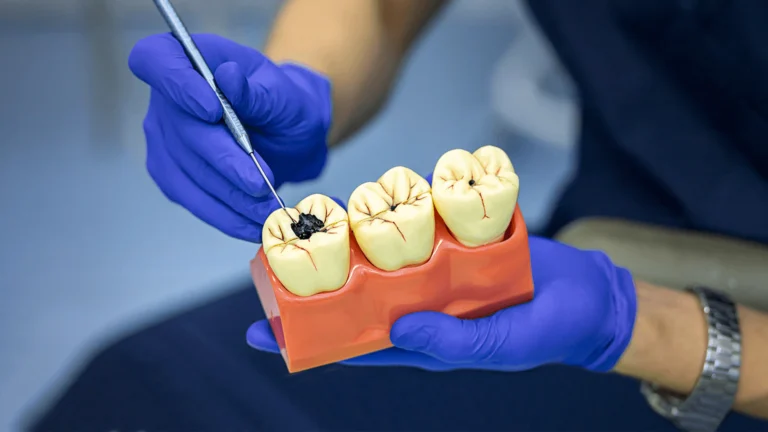Understanding ORAC Values: Antioxidant Levels in Foods
When your main source of antioxidants is coffee, you know that you have a serious problem.
Milos Pokimica
Written By: Milos Pokimica
Medically Reviewed by: Dr. Xiùying Wáng, M.D.
Updated January 7, 2024Key Takeaways:
– ORAC (Oxygen Radical Absorbance Capacity) is a lab test that measures the antioxidant capacity of different substances. It detects real-life values from food with all of the synergistic effects.
– The same food items can have different values depending on the manufacturer as some can oxidize faster than others.
– Only plant-based foods have measurable ORAC values. Animal-based foods have almost no antioxidants compared to plants.
– Not all plant foods are equal in terms of antioxidant content.
– The usual antioxidant intake in the US diet is between 3,000 to 5,000 ORAC units per day with an estimated need of 40,000-50,000 units for adequate protection from free radical damage.
– The USDA removed the ORAC Database for Selected Foods due to “mounting evidence” that the values indicating antioxidant capacity have no relevance to the effects of specific bioactive compounds on human health.
– Despite the scientific community’s support of the importance of antioxidants, it is not emphasized in current health recommendations pushed by physicians.
– The study by Carlsen et al. (2010), measured the antioxidative value of 3149 food items and can guide shopping decisions for healthier choices.
– Spices and herbs are highly antioxidant-rich but consumed in small amounts.
– Supplemental antioxidants should not substitute for a healthy diet, and some antioxidants may not be bioavailable. It’s recommended to consume a variety of high-antioxidant foods with each meal to prevent post-meal oxidative stress.
– ORAC values should not be considered absolute or final indicators of antioxidant quality or quantity. They are intended to serve as a general guide or reference.
Oxygen Radical Absorbance Capacity
Units that measure the antioxidant capacity of different substances are called ORAC (Ou et al., 2013). ORAC stands for Oxygen Radical Absorbance Capacity. It’s a lab test developed by scientists at the National Institute of Health and Aging (NIH).
Testing attempts to measure the total antioxidant capacity of a specific food item or supplement or any substance by placing a sample in a test tube, along with certain molecules that generate free radical activity and certain other molecules that are vulnerable to oxidation.
After a while, they measure how well the sample protected the vulnerable molecules from oxidation by the free radicals. The less free radical damage there is, the higher the antioxidant capacity of the test substance.
With this kind of testing, researchers have a way of measuring the total antioxidant capacity of different whole food items rather than the levels of specific nutrients. This was determined by (Cao et al., 1993), who first discovered and implemented this method, definition of one ORAC unit was defined to be equal to one microM Trolox. Trolox is a water-soluble vitamin E analog.
Because there are thousands of different phytochemicals this method of measurement detects real-life values that we will get from food with all of the synergistic effects between the various nutrients. This is also a way to measure different antioxidants in extracted forms like vitamin C or vitamin E or any other unique antioxidant compounds in plants. This method of measurement is a good way of comparing the antioxidant power of different whole food items and individual substances that we can find in different supplements.
Yang et al. (2011), reported that the intake of total antioxidant capacity (TAC) among US adults was 503.1 mmol/d, based on data from the National Health and Nutrition Examination Survey (NHANES) and the US Department of Agriculture databases. Fruits contributed the most antioxidants, with 43.9% of the intake, while supplements added to the total, mostly from vitamin C, at 14.3%. When converting TAC to Trolox and then Trolox to ORAC, the ORAC score of the standard American diet (SAD) is estimated to range between 2000 and 3000 ORAC units. However, 503.1 mmol/d TAC is equivalent to 2010 ORAC units. Even an average of 3000 units would still be a 30% overestimation. This amount is insufficient to counteract the oxidative increase following normal postprandial metabolism, let alone other sources of inflammation and toxicity.
Summary:
ORAC measures the antioxidant capacity of food and supplements, with higher scores indicating a greater ability to fight free radical damage. While antioxidant capacity measurement methods do not fully capture the real-life effects of food with synergistic nutrient interactions, the current average meat and processed food dominated American diet intake fall short of potentially needed levels, suggesting the need for increased antioxidant intake through diet or supplementation.
The same food items can have different values.
One thing that we should keep in mind here is that the same food items can have different values depending on the manufacturer. If we grind, for example, cocoa bean into cocoa powder there is no protective outer layer any longer to prevent it from oxidizing.
The longer it sits in open-air the more it will oxidize and the lower will the ORAC reading be.
That is the reason we can see a range of different values in ORAC reading for cocoa, cinnamon, or any other item that can oxidize then for example beans that can sit on a shelf for a long time without oxidizing. As soon as the item is exposed to air, oxidation starts. This is the reason why you should never consume flaxseed oil for example.
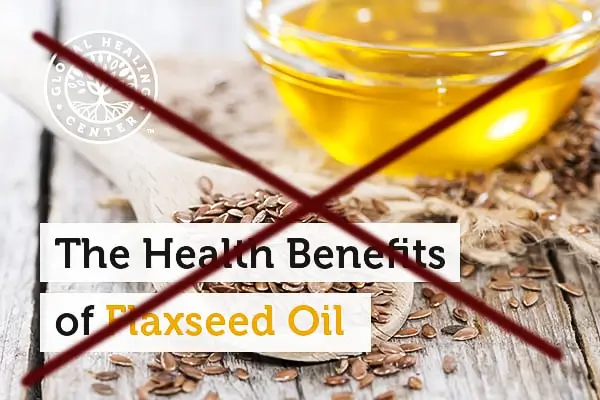
Omega 3 oils are very prone to oxidation. If you grind flaxseeds and eat them immediately there would be a lower level of oxidation. If you like to blend something into a smoothie the level of oxidation caused by blending can destroy a large number of antioxidants in food. Vacuum blenders are a new way of blending food in order to preserve the nutrients in them. Masticating juicers that use a form of the press to extract juice will have juice with a higher antioxidant value than regular juice. That is the reason that we can see a big difference in the same food items tested because of the different methods of manufacturing.
John shares with you the differences between centrifugal juicers, masticating juicers, and cold press juicers. In this episode, John will go into detail about how each of the juicers works and the pros and cons of each of the three popular styles of juicers.
Summary:
Same food items can have wildly different antioxidant values due to processing, storage, and preparation methods, with grinding, exposure to air, and blending significantly reducing their potency. Consider vacuum blenders and masticating juicers to maximize antioxidant intake.
Some items may seem low on the ORAC scale but are actually not.
Also, some items may seem low on the ORAC scale but are actually not. For example, watermelon has a relatively low value but that is because it is mostly just water.
For the same reason dry fruits will have a much higher rating than the same fresh fruit because they are much more concentrated.
Fresh fruit will have higher water content and therefore lower ORAC values.
Spices are another example. Spices are dry and therefore will have in a gram of dry weight higher ORAC value than the same fresh herb that has higher water content. Spices and herbs are one of the most antioxidant-rich products and some are exceptionally high. Also are very low in calories.
Some items may seem high on the ORAC scale but are actually not.
Also, we have to take into account the amounts of specific foods that we can eat. Spices are extremely potent in antioxidant capacity but we can only eat small amounts of them (Yashin et al., 2017). One food item can be low on an ORAC scale but when we see in real life how much of that food is consumed then it might be actually a good source of antioxidants. It all depends on specific foods. We can eat a handful of walnuts with no problem but eating a handful of cloves is difficult.
We can analyze an antioxidant per calorie consumed as well.
Per serving bases nuts have more antioxidants than cloves. But then again, nuts are full of calories. We can analyze an antioxidant per calorie consumed as well.
The general rule and the main rule is that animal products including dairy, all types of meat, and eggs have zero or minuscule amounts of antioxidants and are pro-inflammatory. Only plant foods have measurable ORAC values and not all plants are made equal.
Summary:
Don’t judge a food by its ORAC score alone: consider water content (fresh vs. dried), serving size, and antioxidant density per calorie. While spices are antioxidant powerhouses, their small serving sizes limit their overall impact. Prioritize plant foods for antioxidants, as animal products offer little to none.
Usual antioxidant intake in the U.S.
The usual antioxidant intake in the U.S. diet is between 3,000 to 5,000 ORAC units per day.
40,000-50,000 units a day may be needed to have a significant effect on antioxidant levels and provide adequate protection from all sources of free radical damage but this is just my personal opinion if we compare our weight to other species that can produce their own vitamin C or if we look at whole food plant-based diet of our hominin ancestors. There are no in-depth scientific studies that I know that have done this type of research.
Antioxidants play a crucial role in your health by levering free radical damage and neutralizing different toxins and lowering inflammation.

It is almost unbelievable how bad the American diet is. When your main source of antioxidants is coffee, you know that you have a serious problem. Just one hundred grams of raw cocoa powder has for example around 95,500 units, but some part of that is lost during heating when processing it into cocoa powder you find in stores. But when you ask Big Brother The United States Department of Agriculture, previously a publisher of ORAC data these values have no nutritional significance.
In 2012 USDA’s Nutrient Data Laboratory (NDL) removed the USDA ORAC Database for Selected Foods from the NDL website due to “mounting evidence” that the values indicating antioxidant capacity have no relevance to the effects of specific bioactive compounds, including polyphenols on human health.
Do not worry about it. Just go and eat oil, sugar, meat, dairy, and refined flour. USDA probably has no “mounting evidence“ that sugar and fat in different processed food products are bad either. The UK FSA and the FDA recommend “5 a day” of fruit and vegetable servings, which gives an approximate ORAC score of 3500. It’s all just a joke. That is why in recent years the industry has tried to do some strange experiments like trying to add blueberry extract into the meat. And when we look into all studies done on antioxidants, there are tens of thousands literary tens of thousands double-blind placebo controls clinical trials so far. We can just look into curcumin studies for example (yellow antioxidant pigment from turmeric powder) and we can see that it kills cancer cells better than leading chemotherapy drugs with no side effect except longevity (Ravindran et al., 2009); (Ara et al., 2016); (Park et al., 2013).
Because curcumin and other phytochemicals are hard to absorb USDA will use this as an excuse for why phytochemicals don’t do anything and why they removed recommendations for ORAC requirement in the diet. However, they do absorb just not in a 100 percent manner for example adding just a pinch of black pepper into the turmeric to create a mix will increase curcumin absorption from turmeric tenfold and you do not even need to buy curcumin supplements, especially because there are other antioxidants in turmeric as well (Shoba et al., 1998). For example, beta-carotene is a pigment, antioxidant, and just another phytochemical and needs some sort of fat to get absorbed but that does not mean it is not absorbed completely because it will mean we will all be dead from vitamin A deficiency (your body makes vitamin A from beta-carotene). However, again industry and government have an interest to fool you. They find some excuses and do studies and everything else they can use. This just shows how corrupted the US Government in reality is, and what lengths will they go to confuse and abuse its citizens for the industry interest. You can read about fiber, minerals, phytochemicals, antioxidants, and nutrient density in correlated articles.
Summary:
While standard US diets lack antioxidants (3,000-5,000 ORAC units), much higher intake (40,000-50,000) might be needed for optimal health. Despite evidence of plant-based antioxidants’ benefits (e.g., curcumin), industry and government downplay their importance, potentially prioritizing profits over public health. Prioritize plant-based foods high in ORAC values (spices, fruits, vegetables) over processed, sugar-heavy options for optimal antioxidant intake and health benefits.
ORAC values.
The first database of ORAC values was released by USDA in 2007 and it covered 277 food items.
Then in 2010, the research was published that took 8 years to complete and included the antioxidative value of 3149 food items (Carlsen et al., 2010). They measured every food, every beverage, and every supplement they could find. This was one of the most important studies ever done in the field of nutrition. After all, it has real-life value for a regular person who is going to a market because it can guide regular shopping decisions we make all the time.
You can look up the entire compiled ORAC database in the table. I compiled the ORAC values myself directly from available research so the values might not be 100 percent correct. We can search the database for every single food item now but most importantly, we can get some general rules out of it.
The first rule.
The first rule that this study found was that the average ORAC value for animal-based foods is almost nothing. On average plant foods have more than 60 times more antioxidants than animal-based foods if we count all of the “superfood” items and herbs and extracts.
In the animal kingdom, for comparison, the highest value is ox liver at 710. Actually, there is one animal kingdom food item that has much more antioxidants and that is human breast milk with a score of 2030. On average eggs are just 40, dairy 140, fish 110, meat and meat products 310 and chicken is 230. To compare let’s look at the worst of the plant kingdom, cucumber raw without peel at 140, iceberg lettuce at 438, and watermelon at 142. Legumes are averaging 480, grains at 340, vegetables 800 but then nuts and seeds have an average of 4570, berries and berry products 9860, spices and herbs 29020 and the highest category is herbal/traditional plant medicine with an average rating of 91720.
They concluded:
“The results here uncover that the antioxidant content of foods varies several thousand-fold and that antioxidant rich foods originate from the plant kingdom while meat, fish and other foods from the animal kingdom are low in antioxidants. Comparing the mean value of the ‘Meat and meat products’ category with plant based categories, fruits, nuts, chocolate, and berries have from 5 to 33 times higher mean antioxidant content than the mean of meat products. Diets comprised mainly of animal-based foods are thus low in antioxidant content while diets based mainly on a variety of plant-based foods are antioxidant rich, due to the thousands of bioactive antioxidant phytochemicals found in plants which are conserved in many foods and beverages.“
| Antioxidant content in mmol/100 g | |||||
|---|---|---|---|---|---|
| n | mean | median | min | max | |
| Plant based foods | 1943 | 11.57 | 0.88 | 0.00 | 2897.11 |
| Animal based foods | 211 | 0.18 | 0.10 | 0.00 | 1.00 |
| Mixed foods | 854 | 0.91 | 0.31 | 0.00 | 18.52 |
| Categories | |||||
| Berries and berry products | 119 | 9.86 | 3.34 | 0.06 | 261.53 |
| Beverages | 283 | 8.30 | 0.60 | 0.00 | 1347.83 |
| Breakfast cereals | 90 | 01.09 | 0.89 | 0.16 | 4.84 |
| Chocolates and sweets | 80 | 4.93 | 2.33 | 0.05 | 14.98 |
| Dairy products | 86 | 0.14 | 0.06 | 0.00 | 0.78 |
| Desserts and cakes | 134 | 0.45 | 0.20 | 0.00 | 4.10 |
| Egg | 12 | 0.04 | 0.04 | 0.00 | 0.16 |
| Fats and oils | 38 | 0.51 | 0.39 | 0.19 | 1.66 |
| Fish and seafood | 32 | 0.11 | 0.08 | 0.03 | 0.65 |
| Fruit and fruit juices | 278 | 1.25 | 0.69 | 0.03 | 55.52 |
| Grains and grain products | 227 | 0.34 | 0.18 | 0.00 | 3.31 |
| Herbal/traditional plant medicine | 59 | 91.72 | 14.18 | 0.28 | 2897.11 |
| Infant foods and beverages | 52 | 0.77 | 0.12 | 0.02 | 18.52 |
| Legumes | 69 | 0.48 | 0.27 | 0.00 | 1.97 |
| Meat and meat products | 31 | 0.31 | 0.32 | 0.00 | 0.85 |
| Miscellaneous ingredients, condiments | 44 | 0.77 | 0.15 | 0.00 | 15.54 |
| Mixed food entrees | 189 | 0.19 | 0.16 | 0.03 | 0.73 |
| Nuts and seeds | 90 | 4.57 | 0.76 | 0.03 | 33.29 |
| Poultry and poultry products | 50 | 0.23 | 0.15 | 0.05 | 1.00 |
| Snacks, biscuits | 66 | 0.58 | 0.61 | 0.00 | 1.17 |
| Soups, sauces gravies, dressing | 251 | 0.63 | 0.41 | 0.00 | 4.67 |
| Spices and herbs | 425 | 29.02 | 11.30 | 0.08 | 465.32 |
| Vegetables and vegetable products | 303 | 0.80 | 0.31 | 0.00 | 48.07 |
| Vitamin and dietary supplements | 131 | 98.58 | 3.27 | 0.00 | 1052.44 |
Summary:
Plant foods reign supreme in antioxidants: animal products offer next to none, while plant-based options like berries, spices, and nuts boast thousands-fold higher antioxidant levels. Prioritize a plant-rich diet for optimal antioxidant intake and potential health benefits.
The second rule.
The second rule that we need to consider is that there is a wide range of values even for plant foods.
It ranges from zero to 2,897,110 μmol TE/100g for the number one on the list. That is almost 3 million in value.
Plants are good for health and we should eat our fruits and veggies. The problem is that we don’t want to do it. And even if we do eat vegetables, not all vegetables are made equal. If we have to compare kale with cucumbers, kale is a clear win. Some plants have more phytochemicals and are much more nutritious than others. The problem is that usually even when people choose fruits and vegetables, they choose the less nutritious ones.
Potatoes, cucumbers, Iceberg lettuce, bananas instead of sweet potatoes, kale, spinach, berries, and spices.
Summary:
Plant-based doesn’t guarantee high antioxidants: choose nutrient powerhouses like kale, berries, and spices over less potent veggies like potatoes and bananas for optimal antioxidant intake.
The third rule.
Supplemental antioxidants are not a substitute for a bad diet with a nonexistent ORAC score even if it is a whole food plant-based diet, learn your ORAC values.
There is no wonder cure or substitute for a bad diet, there are only more potent supplemental antioxidant food sources like amla, turmeric, cacao, hibiscus, or berries… Always take whole food sources of antioxidants before supplemental extracted forms because of the phytochemical synergies. There are only a few supplemental antioxidants that are proven to be effective and safe like liposomal vitamin C, curcumin, or astaxanthin.
The fourth rule.
A higher ORAC score determined from the test tube may not mean higher antioxidant activity in our body.
Some antioxidants have low bioavailability. Science has gone a long way but still, consumers can’t learn about the bioavailability of every single phytochemical in existence. This is a reason why diversity in nutrition is key. Some plants have very unique and beneficial phytochemicals even if they are not high on the ORAC list. Sulforaphane is a good example of this.
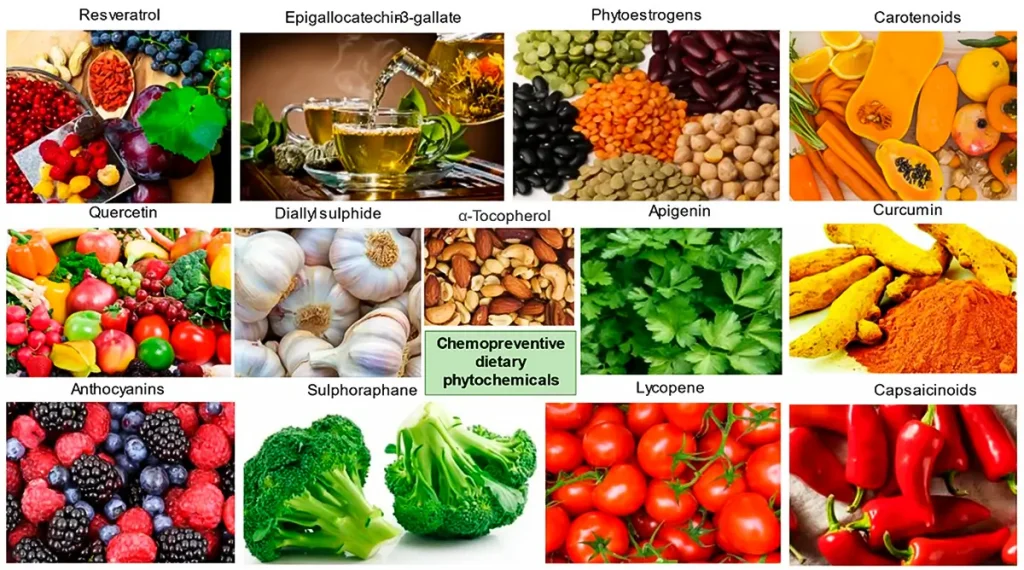
It is possible to investigate how food affects our antioxidant status by measuring the antioxidant capacity in our blood. One study (Prior et al., 2007) conducted by researchers at the USDA checked the AOC level of volunteers after consuming blueberries, cherries, dried plums, and other high-antioxidant fruits. Interestingly, they found that consumption of dried plums or dried plum juice did not alter antioxidant capacity in the blood.
Also, a big chunk of phytochemicals is not stable during cooking (Fang et al., 2022); (Palermo et al., 2014); (Pellegrini et al., 2010). Vitamin C is an example of this. If you see vitamin C on the label of orange juice in the store it is artificially added after processing. All juices need to be pasteurized by law to prevent bacterial infections. This is one of the reasons why some proponents insist on a raw food diet as a more natural and more nutritious type of diet. On another hand, some phytochemicals will have an increase in bioavailability after cooking. An example of this would be lycopene from tomatoes.
If you don’t want to science every food synergy and bioavailability of every single phytochemical as a consumer you can just consume different types of high antioxidant-rich foods with each meal. This is recommended in order to prevent periods of postprandial (post-meal) oxidative stress (Muñoz et al., 2013), (Khor et al., 2014).
Summary:
High ORAC scores in a test tube don’t guarantee high antioxidant activity in the body. Focus on diverse plant-based foods with unique phytochemicals, consider raw options for some nutrients like vitamin C, and aim for different antioxidant-rich foods at each meal to optimize your antioxidant intake and combat post-meal oxidative stress. Don’t be a food scientist, just eat a rainbow!
Health recommendations.
At this point, this line of scientific research is well established and well accepted but only in the scientific community that is doing them for the interest of the pharmaceutical industry. You will be able to find all of this on the PubMed website but outside of the narrow scientific community, nobody is talking. The regular public will hear something here and there with no real awareness. You reading this might be in less than one percent of the population. When you ask a medical establishment, they will tell a completely different story.
In accepted health recommendations pushed by physicians, there is no room for antioxidants.
The medical establishment doesn’t want people to know this and will argue that antioxidants are of no major importance for health and that they are not vitamins and that there is no need for RDA for antioxidant or phytochemical consumption. We don’t have public awareness of phytochemical importance and regular science will tell people everything they can just to confuse and undermine awareness.
They will not talk about antioxidants, they will not enforce RDA in the food pyramid and will do anything to confuse people on purpose. They will use half-truths and the entire database of ORAC values had been removed from the USDA website. There are limitations or uncertainties regarding ORAC values and their relevance, there is a big cloud of mystery that we need to unravel. In this article, we will discuss them all.
Summary:
Despite the scientific evidence, health recommendations remain largely silent on antioxidants, with the medical establishment downplaying their importance and hindering public awareness. This article aims to dispel the confusion and empower you to understand the potential of antioxidants in your diet.
Limitations or uncertainties regarding the ORAC values.
Here are some of the factors that may affect the accuracy or relevance of ORAC values:
- ORAC values are not standardized or regulated. Different methods or laboratories may produce different results for the same food or supplement. There is no official or agreed-upon database or reference for ORAC values, and some sources may be outdated or inaccurate.
- ORAC values are measured in vitro, meaning in a test tube. They may not reflect the actual bioavailability or effectiveness of antioxidants in vivo, meaning in the body.
- The ORAC values of foods or supplements can vary depending on their source, processing, and preparation. Varieties, seasons, soil, climate, storage, cooking, extraction, and formulation can all have an impact on the antioxidant content. Fresh fruits and vegetables, for example, may have higher ORAC values than canned or frozen ones and raw foods may have higher ORAC values than cooked ones.
- ORAC values do not account for the synergistic or antagonistic effects of different antioxidants. Antioxidants may work better or worse in combination with other antioxidants or other nutrients. For example, vitamin C may enhance the absorption of iron, but it may also reduce the absorption of copper. ORAC values also do not account for the balance or ratio of different antioxidants. For example, too much vitamin E may interfere with the function of vitamin K.
- ORAC values do not take into account people’s individual differences or needs. Age, gender, genetics, health status, lifestyle, diet, medication, and environment can all influence how much antioxidants a person requires or tolerates. Smokers, for example, may require more antioxidants than nonsmokers, but they may also be more sensitive to their negative effects.
As a result, ORAC values should not be considered absolute or final indicators of antioxidant quality or quantity. They are intended to serve as a general guide or reference.
Summary:
While ORAC scores offer a glimpse into a food’s antioxidant capacity, their limitations require caution: they’re test-tube based, vary with processing and individual needs, and don’t capture interactions between nutrients. Use them as a guide, not gospel, when choosing antioxidant-rich foods.
Information on the optimal intake or range of ORAC values for different individuals or health conditions.
Different studies and experts may have different opinions or findings on this matter. You by now know my opinion on the subject.
However, some general guidelines or suggestions can be made based on the current knowledge and research on antioxidants and health:
- The average daily intake of antioxidants from foods in the US is estimated to be around 2000 to 3000 ORAC units. This value is calculated statistically. This is considered to be low compared to some other countries or regions where people consume more fruits and vegetables and extremely low if we understand the evolution of our species. At the bare minimum increasing the intake of antioxidants from foods to around 8000 to 12000 ORAC units per day may have positive effects on health and longevity (Prior et al., 2000), (Sadowska-Bartosz et al., 2014), (Yu et al., 2022).
- The upper limit of the intake of antioxidants from supplements is not well established. High doses of antioxidants from supplements that can turn themselves into prooxidants inside the body or need an enzymatic pathway to be removed will increase oxidative damage in the end. Do not take syntenic vitamin E or more than 400 IU per day of natural vitamin E or any amount of beta-carotene from supplements.
- The optimal intake or range of ORAC values may differ depending on the individual needs of different people. The amount of antioxidants a person requires or tolerates is affected by age, health status, lifestyle, diet, medications, environment, and other factors. People suffering from diseases or conditions, for example, cardiovascular diseases, diabetes, neurodegenerative diseases, or cancer may require more antioxidants (Willcox et al., 2004), (Forman et al., 2021), (Obrenovich et al., 2011).
- The optimal intake or range of ORAC values may also vary depending on the type and source of antioxidants.
- Different antioxidants have different functions and effects on the body. For example, vitamin C is outside of its antioxidative properties involved in collagen synthesis and immune function, vitamin E is involved in lipid peroxidation and cell membrane protection, and beta-carotene is involved in vision and skin health.
- Different foods and supplements have different combinations and proportions of antioxidants. For example, berries have high amounts of anthocyanins, green tea has high amounts of catechins, and turmeric has high amounts of curcumin.
Therefore, it is important to consider both the quality and quantity of antioxidants from different sources because they are all needed. You cannot substitute one for another. You need to balance them with other nutrients and factors that affect health.
Summary:
While optimal antioxidant intake varies based on individual needs and sources, aiming for 8,000-12,000 ORAC units daily through diverse plant-based foods prioritizes overall health and longevity. Avoid exceeding safe supplement limits and remember, a balanced diet and healthy lifestyle are key.
Potential risks or side effects of consuming too many antioxidants.
Antioxidants are essential for good health but when consumed in excess, they can also have negative side effects. Some of the risks of consuming too many antioxidants:
- Consuming too many antioxidants may also increase the risk of oxidative stress and damage by disrupting the body’s natural antioxidant defense system. This can result in a condition known as pro-oxidation, in which antioxidants act as pro-oxidants, producing more free radicals than they neutralize. High doses of synthetic or isolated antioxidants from supplements, which may not have the same effects or interactions as natural antioxidants from foods, can also cause pro-oxidation.
- Consuming too many antioxidants may also interfere with some physiological functions or processes that require or involve free radicals or oxidation. For example, some free radicals are involved in signaling pathways, immune responses, hormone synthesis, etc. Some oxidation reactions are involved in energy production, detoxification, drug metabolism, etc. Antioxidants may inhibit or modify these functions or processes, which may have negative consequences for health and performance.
- Consuming too many antioxidants may also interact with some medications or treatments that rely on oxidation or free radicals. For example, some antibiotics, chemotherapy drugs, radiation therapy, etc. Antioxidants may reduce the effectiveness or increase the toxicity of these medications or treatments, which may compromise the outcomes or cause adverse effects.
Therefore, it is important to consume antioxidants in moderation and balance and to consult with a health professional before taking any supplements or undergoing any treatments that may affect the antioxidant status of the body. Never take any supplemental antioxidants outside of whole food sources that have the potential to turn themselves into prooxidants inside the body. Never take any antioxidants that need enzymatic pathways to be removed from the body.
Summary:
Modest antioxidant intake through diverse plant foods is key, as overdoing it through supplements can disrupt your body’s natural balance, interfere with functions, and interact with medications, so consult a professional before upping your intake.
How much do we need?
The story they impose is that the body can effectively only use 3000-5000 ORAC units per day and that any more is useless. Any more than this (i.e. with mega-dosing in supplemental form or eating antioxidant-rich food) seems to be of no added benefit and “excess” is most likely excreted by the kidneys. A good example of this is, for example, a statement from Dr. Ronald Prior of the US Department of Agriculture Research Service at Tufts University, Boston, Massachusetts that is quoted to have said:
“A significant increase in antioxidants of 15-20% is possible by increasing consumption of fruits and vegetables, particularly those high in ORAC value. However, to have a significant impact on plasma and tissue antioxidant capacity one can only meaningfully increase one’s daily intake by 3000-5000 ORAC units. Any greater amount is probably redundant. That is because the antioxidant capacity of the blood is tightly regulated. Thus, there is an upper limit to the benefit that can be derived from antioxidants. Taking in 25000 ORAC units at one time would be no more beneficial than taking in a fifth of that amount. The excess is simply excreted by the kidneys”.
They are just lying to you. There are water-soluble antioxidants that can be removed by the kidneys. A similar story is with vitamin C and that is correct. If you take too much vitamin C excess will be removed but Dr. Ronald somehow forgets about the fact that not all antioxidants are water-soluble.
Oil-soluble substances cannot be removed through the kidneys. Any excess of them will bioaccumulate and will offer long-lasting protection. A visual example of this would be carotenemia.
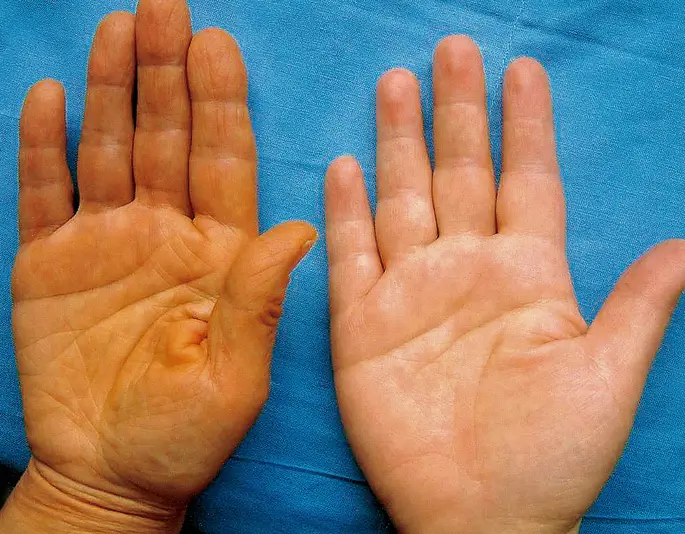
And not just that.
Water-soluble antioxidants do their job of lowering inflammation and neutralizing free radicals before removal as well.
Because there is no “official” daily recommended intake of ORAC units, you will see various researchers suggest an optimal intake to be only 3000-5000 ORAC units per day, and many physicians will not recommend antioxidant-rich diets at all.
They will tell their patients absolutely nothing about thousands and thousands of studies done on a topic and will usually just suggest losing weight and physical exercise with a line of prescribed medicine as a standard line of treatment. And this is not by accident. Even the USDA has come up with a suggested intake of 5000 ORAC units per day. The UK FSA and the FDA recommend “5 a day” of fruit and vegetable servings, which gives an approximate ORAC score of 3500.
Summary:
Despite claims that 3,000-5,000 ORAC units suffice, consider the potential benefits of exceeding this limit with plant-based antioxidants, as fat-soluble ones stay in the body longer and water-soluble ones act before being removed. Don’t be fooled by the “5 a day” recommendation, explore the power of diverse antioxidant-rich foods.
Don’t be me.
On another note, after you learn all of this, do not become obsessed like I was. I was chasing ORAC at every grocery store.
One day, I decided to experiment with a new smoothie recipe I discovered online. It claimed to have a very high ORAC value and to be packed with antioxidants. It had ingredients like blueberries, spinach, cocoa, kale, turmeric, ginger, and cinnamon. The only thing left out was garlic. It actually sounded delicious, so I gathered all the ingredients and blended them together. The end result was a thick, dark purple liquid with a spicy aroma. I poured myself a glass and sipped. It tasted awful.
It tasted bitter, sour, spicy, and chalky all at the same time. I was about to spit it out when I forced myself to swallow it. I assumed it was an acquired taste that I would grow accustomed to after a few sips. But, instead, things just got worse. The taste stuck. I had the sensation that I was drinking a concoction of dirt, vinegar, and pepper. Maybe with half of a cup of refined sugar but then again it would lose its initial healthy value if I added a ton of sugar. I wondered how anyone could enjoy this smoothie, or how it could be good for me. I looked at the recipe again and noticed that it had a disclaimer at the bottom:
“This smoothie is not for the faint of heart. It may cause stomach upset, heartburn, or allergic reactions in some people. Consult your doctor before trying this smoothie if you have any medical conditions or are taking any medications.”
I wished I had read that before creating permanent memory for myself. I decided to throw away the rest of it, and never try it again. I learned my lesson: ORAC values are not everything. Sometimes, less is more when it comes to antioxidants.
Why do you and I need to eat more antioxidants with the right strategy to have the best shot at preventing disease? An in-depth look at the research to get your antioxidant status on lock.
Conclusion:
ORAC values are a useful tool to measure the antioxidant capacity of foods and supplements, but they are not without limitations or uncertainties.
They are meant to be used as a general guide or reference, not as a replacement for professional advice.
The optimal intake or range of ORAC values may vary depending on the individual needs of different people and health conditions. Antioxidants are essential for health and well-being, but can also have some risks or side effects if consumed in excess.
It is important to consider both synergistic effects and unique characteristics on top of the quantity to consume different sources and types, and to balance them with other nutrients and factors that affect health.
I hope this article has helped you understand more about ORAC values, and how to choose and consume foods with high ORAC scores. Thank you for reading and stay healthy.
- We depend on antioxidant phytochemicals, two of them are vitamins for us, vitamin C and vitamin E.
- Units that measure the antioxidant capacity of different substances are called ORAC. ORAC stands for Oxygen Radical Absorbance Capacity.
- Same food items can have different values depending on the manufacturer because of the different methods of manufacturing.
- As soon as the item is exposed to air, oxidation starts.
- Some items may seem low on the ORAC scale but are not because of the high water content.
- We have to take into account the amounts of specific foods that we can eat.
- We can analyze an antioxidant per calorie consumed as well.
- Not all plants are made equal.
- In 2010, the research was published that took 8 years to complete and included the antioxidative value of 3149 food items.
- ORAC Database is important. It has real-life value for a regular person that is going to a market because it can guide regular shopping decisions we make all the time.
- In 2012 USDA’s Nutrient Data Laboratory (NDL) removed the USDA ORAC Database for Selected Foods from the NDL website due to “mounting evidence” that the values indicating antioxidant capacity have no relevance to the effects of specific bioactive compounds, including polyphenols on human health.
- The main rule this study found is that animal products including dairy, all types of meat, and eggs have zero or minuscule amounts of antioxidants and are pro-inflammatory.
- The second rule that we need to consider is that there is a wide range of values even for plant foods.
- The third rule: Supplemental antioxidants are not a substitute for a bad diet with a nonexistent ORAC score even if it is whole food plant-based diet, learn your ORAC values.
- The fourth rule: Higher ORAC score determined from the test tube may not mean higher antioxidant activity in our body.
- A big chunk of phytochemicals is not stable during cooking.
- The usual antioxidant intake in the U.S. diet is between 3,000 to 5,000 ORAC units per day.
- 40,000-50,000 units a day may be needed to have a significant effect on antioxidant levels and provide adequate protection from all sources of free radical damage.
- Always take whole food sources of antioxidants before supplemental extracted forms because of the phytochemical synergies.
- There is no wonder cure or substitute for a bad diet, there are only more potent supplemental antioxidant food sources like amla, turmeric, cacao, hibiscus, astaxanthin, or berries…
- Currently, MegaHydrate is the most potent dietary antioxidant known to science (synthetic).
- The most potent natural antioxidant known to science is Astaxanthin.
- The most potent and most consumed dietary antioxidant is curcumin.
- Today there is no “official” daily recommended consumption of ORAC units.
- Various researchers suggest an optimal intake to be only 3000-5000 ORAC units per day, and many physicians will not recommend antioxidant-rich diets at all.
- The UK FSA and the FDA recommend “5 a day” of fruit and vegetable servings, which gives an approximate ORAC score of 3500.
FAQ
References:
Passages selected from a book: Pokimica, Milos. Go Vegan? Review of Science: Part 3. Kindle Direct Publishing, 2020.
- Carlsen, M. H., Halvorsen, B. L., Holte, K., Bøhn, S. K., Dragland, S., Sampson, L., Willey, C., Senoo, H., Umezono, Y., Sanada, C., Barikmo, I., Berhe, N., Willett, W. C., Phillips, K. M., Jacobs, D. R., Jr, & Blomhoff, R. (2010). The total antioxidant content of more than 3100 foods, beverages, spices, herbs and supplements used worldwide. Nutrition journal, 9, 3. https://doi.org/10.1186/1475-2891-9-3
- Wu, X., Beecher, G. R., Holden, J. M., Haytowitz, D. B., Gebhardt, S. E., & Prior, R. L. (2004). Lipophilic and Hydrophilic Antioxidant Capacities of Common Foods in the United States. Journal of Agricultural and Food Chemistry, 52(12), 4026–4037. https://doi.org/10.1021/jf049696w
- Prior, R. L., Gu, L., Wu, X., Jacob, R. A., Sotoudeh, G., Kader, A. A., & Cook, R. A. (2007). Plasma antioxidant capacity changes following a meal as a measure of the ability of a food to alter in vivo antioxidant status. Journal of the American College of Nutrition, 26(2), 170–181. https://doi.org/10.1080/07315724.2007.10719599
- Khan, M. M., Busquets, R., & Azam, M. (2021). Blueberry, raspberry, and strawberry extracts reduce the formation of carcinogenic heterocyclic amines in fried camel, beef and chicken meats. Food Control, 123, 107852. https://doi.org/10.1016/j.foodcont.2020.107852
- Burton-Freeman B. (2010). Postprandial metabolic events and fruit-derived phenolics: a review of the science. The British journal of nutrition, 104 Suppl 3, S1–S14. https://doi.org/10.1017/S0007114510003909
- Macho-González, A., Garcimartín, A., López-Oliva, M. E., Bastida, S., Benedí, J., Ros, G., Nieto, G., & Sánchez-Muniz, F. J. (2020). Can Meat and Meat-Products Induce Oxidative Stress?. Antioxidants (Basel, Switzerland), 9(7), 638. https://doi.org/10.3390/antiox9070638
- Ou, B., Chang, T., Huang, D., & Prior, R. L. (2013). Determination of total antioxidant capacity by oxygen radical absorbance capacity (ORAC) using fluorescein as the fluorescence probe: First Action 2012.23. Journal of AOAC International, 96(6), 1372–1376. https://doi.org/10.5740/jaoacint.13-175
- Yashin, A., Yashin, Y., Xia, X., & Nemzer, B. (2017). Antioxidant Activity of Spices and Their Impact on Human Health: A Review. Antioxidants (Basel, Switzerland), 6(3), 70. https://doi.org/10.3390/antiox6030070
- Ravindran, J., Prasad, S., & Aggarwal, B. B. (2009). Curcumin and cancer cells: how many ways can curry kill tumor cells selectively?. The AAPS journal, 11(3), 495–510. https://doi.org/10.1208/s12248-009-9128-x
- Ara, S. A., Mudda, J. A., Lingappa, A., & Rao, P. (2016). Research on curcumin: A meta-analysis of potentially malignant disorders. Journal of cancer research and therapeutics, 12(1), 175–181. https://doi.org/10.4103/0973-1482.171370
- Park, W., Amin, A. R., Chen, Z. G., & Shin, D. M. (2013). New perspectives of curcumin in cancer prevention. Cancer prevention research (Philadelphia, Pa.), 6(5), 387–400. https://doi.org/10.1158/1940-6207.CAPR-12-0410
- Shoba, G., Joy, D., Joseph, T., Majeed, M., Rajendran, R., & Srinivas, P. S. (1998). Influence of piperine on the pharmacokinetics of curcumin in animals and human volunteers. Planta medica, 64(4), 353–356. https://doi.org/10.1055/s-2006-957450
- Fang, H., Yin, X., He, J., Xin, S., Zhang, H., Ye, X., Yang, Y., & Tian, J. (2022). Cooking methods affected the phytochemicals and antioxidant activities of potato from different varieties. Food chemistry: X, 14, 100339. https://doi.org/10.1016/j.fochx.2022.100339
- Palermo, M., Pellegrini, N., & Fogliano, V. (2014). The effect of cooking on the phytochemical content of vegetables. Journal of the science of food and agriculture, 94(6), 1057–1070. https://doi.org/10.1002/jsfa.6478
- Pellegrini, N., Chiavaro, E., Gardana, C., Mazzeo, T., Contino, D., Gallo, M., Riso, P., Fogliano, V., & Porrini, M. (2010). Effect of different cooking methods on color, phytochemical concentration, and antioxidant capacity of raw and frozen brassica vegetables. Journal of agricultural and food chemistry, 58(7), 4310–4321. https://doi.org/10.1021/jf904306r
- Muñoz, A., & Costa, M. (2013). Nutritionally mediated oxidative stress and inflammation. Oxidative medicine and cellular longevity, 2013, 610950. https://doi.org/10.1155/2013/610950
- Khor, A., Grant, R., Tung, C., Guest, J., Pope, B., Morris, M., & Bilgin, A. (2014). Postprandial oxidative stress is increased after a phytonutrient-poor food but not after a kilojoule-matched phytonutrient-rich food. Nutrition research (New York, N.Y.), 34(5), 391–400. https://doi.org/10.1016/j.nutres.2014.04.005
- Prior, R. L., Cao, G., Prior, R. L., & Cao, G. (2000). Analysis of botanicals and dietary supplements for antioxidant capacity: a review. Journal of AOAC International, 83(4), 950–956. [PubMed]
- Sadowska-Bartosz, I., & Bartosz, G. (2014). Effect of antioxidants supplementation on aging and longevity. BioMed research international, 2014, 404680. https://doi.org/10.1155/2014/404680
- Yu, Z., Zhang, F., Xu, C., & Wang, Y. (2022). Association between Circulating Antioxidants and Longevity: Insight from Mendelian Randomization Study. BioMed research international, 2022, 4012603. https://doi.org/10.1155/2022/4012603
- Willcox, J. K., Ash, S. L., & Catignani, G. L. (2004). Antioxidants and prevention of chronic disease. Critical reviews in food science and nutrition, 44(4), 275–295. https://doi.org/10.1080/10408690490468489
- Forman, H. J., & Zhang, H. (2021). Targeting oxidative stress in disease: promise and limitations of antioxidant therapy. Nature reviews. Drug discovery, 20(9), 689–709. https://doi.org/10.1038/s41573-021-00233-1
- Obrenovich, M. E., Li, Y., Parvathaneni, K., Yendluri, B. B., Palacios, H. H., Leszek, J., & Aliev, G. (2011). Antioxidants in health, disease and aging. CNS & neurological disorders drug targets, 10(2), 192–207. https://doi.org/10.2174/187152711794480375
- Cao, G., Alessio, H. M., & Cutler, R. G. (1993). Oxygen-radical absorbance capacity assay for antioxidants. Free radical biology & medicine, 14(3), 303–311. https://doi.org/10.1016/0891-5849(93)90027-r
- Yang, M., Chung, S. J., Chung, C. E., Kim, D. O., Song, W. O., Koo, S. I., & Chun, O. K. (2011). Estimation of total antioxidant capacity from diet and supplements in US adults. The British journal of nutrition, 106(2), 254–263. https://doi.org/10.1017/S0007114511000109
Related Posts
Do you have any questions about nutrition and health?
I would love to hear from you and answer them in my next post. I appreciate your input and opinion and I look forward to hearing from you soon. I also invite you to follow us on Facebook, Instagram, and Pinterest for more diet, nutrition, and health content. You can leave a comment there and connect with other health enthusiasts, share your tips and experiences, and get support and encouragement from our team and community.
I hope that this post was informative and enjoyable for you and that you are prepared to apply the insights you learned. If you found this post helpful, please share it with your friends and family who might also benefit from it. You never know who might need some guidance and support on their health journey.
– You Might Also Like –

Learn About Nutrition
Milos Pokimica is a doctor of natural medicine, clinical nutritionist, medical health and nutrition writer, and nutritional science advisor. Author of the book series Go Vegan? Review of Science, he also operates the natural health website GoVeganWay.com
Medical Disclaimer
GoVeganWay.com brings you reviews of the latest nutrition and health-related research. The information provided represents the personal opinion of the author and is not intended nor implied to be a substitute for professional medical advice, diagnosis, or treatment. The information provided is for informational purposes only and is not intended to serve as a substitute for the consultation, diagnosis, and/or medical treatment of a qualified physician or healthcare provider.NEVER DISREGARD PROFESSIONAL MEDICAL ADVICE OR DELAY SEEKING MEDICAL TREATMENT BECAUSE OF SOMETHING YOU HAVE READ ON OR ACCESSED THROUGH GoVeganWay.com
NEVER APPLY ANY LIFESTYLE CHANGES OR ANY CHANGES AT ALL AS A CONSEQUENCE OF SOMETHING YOU HAVE READ IN GoVeganWay.com BEFORE CONSULTING LICENCED MEDICAL PRACTITIONER.
In the event of a medical emergency, call a doctor or 911 immediately. GoVeganWay.com does not recommend or endorse any specific groups, organizations, tests, physicians, products, procedures, opinions, or other information that may be mentioned inside.
Editor Picks –
Milos Pokimica is a health and nutrition writer and nutritional science advisor. Author of the book series Go Vegan? Review of Science, he also operates the natural health website GoVeganWay.com
Latest Articles –
Top Health News — ScienceDaily
- This cancer-fighting molecule took 50 years to buildon December 22, 2025
MIT scientists have achieved the first-ever lab synthesis of verticillin A, a complex fungal compound discovered in 1970. Its delicate structure stalled chemists for decades, despite differing from related molecules by only two atoms. With the synthesis finally complete, researchers created new variants that showed strong activity against a rare pediatric brain cancer. The breakthrough could unlock an entire class of previously unreachable cancer-fighting molecules.
- A new drug could stop Alzheimer’s before memory loss beginson December 22, 2025
New research suggests Alzheimer’s may start far earlier than previously thought, driven by a hidden toxic protein in the brain. Scientists found that an experimental drug, NU-9, blocks this early damage in mice and reduces inflammation linked to disease progression. The treatment was given before symptoms appeared, targeting the disease at its earliest stage. Researchers say this approach could reshape how Alzheimer’s is prevented and treated.
- Why one long walk may be better than many short oneson December 22, 2025
How you walk may matter just as much as how much you walk. A large UK study tracking more than 33,000 low-activity adults found that people who grouped their daily steps into longer, uninterrupted walks had dramatically lower risks of early death and heart disease than those who moved in short, scattered bursts.
- Parkinson’s breakthrough changes what we know about dopamineon December 22, 2025
A new study shows dopamine isn’t the brain’s movement “gas pedal” after all. Instead of setting speed or strength, it quietly enables movement in the background, much like oil in an engine. When scientists manipulated dopamine during movement, nothing changed—but restoring baseline dopamine levels made a big difference. The finding could reshape how Parkinson’s disease is treated.
- A traditional Brazilian plant shows unexpected strength against arthritison December 22, 2025
A Brazilian study has confirmed that Joseph’s Coat, a plant used for generations in folk medicine, can significantly reduce inflammation and arthritis symptoms in lab tests. Researchers observed less swelling, healthier joints, and signs of tissue protection. Just as important, the extract showed a promising safety profile at tested doses. The discovery could pave the way for new plant-based anti-inflammatory treatments.
- Study links full-fat cheese to lower dementia riskon December 22, 2025
Eating full-fat cheese and cream may be associated with a lower risk of dementia, according to a large study that tracked people for more than 25 years. Those who consumed higher amounts of these foods developed dementia less often than those who ate little or none. Interestingly, low-fat dairy products did not show the same pattern. Researchers caution that the findings show an association, not cause and effect.
- Science says we’ve been nurturing “gifted” kids all wrongon December 21, 2025
A major international review has upended long-held ideas about how top performers are made. By analyzing nearly 35,000 elite achievers across science, music, chess, and sports, researchers found that early stars rarely become adult superstars. Most world-class performers developed slowly and explored multiple fields before specializing. The message is clear: talent grows through variety, not narrow focus.
PubMed, #vegan-diet –
- Comparing diet-related attitudes, perceptions, and behaviors of vegan and omnivorous adults: results from a cross-sectional survey study in Germanyon December 22, 2025
CONCLUSION: The findings are consistent with and build on existing research on cognitive and behavioral patterns related to a vegan diet, while at the same time yielding some additional insights. In particular, the results on significant differences in the risk-benefit perception of a vegan diet, as well as on motivations and influences regarding the decision to follow a vegan diet provide an important basis for the development of public health interventions and a foundation for further […]
- Assessment of vitamin A, vitamin B2, vitamin B12, vitamin K, folate, and choline status following 4 months of multinutrient supplementation in healthy vegans: a randomised,…on December 19, 2025
CONCLUSION: A multinutrient supplement containing 82 µg of vitamin B(12) per day significantly positively affected vitamin B(12) blood biomarkers in healthy vegans.
- Exploring the synergistic potential of pH and ultrasonication on the functional properties of pea and lentil protein isolates and its formulation in food producton December 15, 2025
The substitution of meat proteins with plant-based proteins from various sources is often motivated by nutritional considerations. However, the inherent limited solubility of plant proteins, which results in suboptimal techno-functional properties, remains a persistent challenge in food formulation. The purpose of this study was to utilize unique properties of pea (Pisum sativum L.) and lentil (Lens culinaris) through ultrasonication and pH variation in order to develop a stable and […]
- Healthful and Unhealthful Plant-Based Diets and Their Association with Cardiometabolic Targets in Women Diagnosed with Breast Cancer: A Cross-Sectional Analysis of a Lifestyle Trialon December 11, 2025
CONCLUSIONS: Maintaining cardiometabolic risk factors within normal ranges is clinically relevant in BCS, and this may be more likely when a plant-based diet is consumed, especially if low in unhealthy plant foods.
- Functional and Nutritional Properties of Lion’s Mane Mushrooms in Oat-Based Desserts for Dysphagia and Healthy Ageingon December 11, 2025
Hericium erinaceus (Lion’s Mane mushroom) is a medicinal species recognised for its neuroprotective and antioxidant properties. This study investigated its potential as a functional ingredient in oat milk-based desserts formulated for individuals with dysphagia. Freeze-dried Lion’s Mane powder (LMP), containing high-quality protein (~16%, amino acid score 88%), dietary fibre (~31%), and phenolic compounds (72.15 mg GAE/g), was incorporated at varying levels using gelatin or iota-carrageenan […]
Random Posts –
Featured Posts –
Latest from PubMed, #plant-based diet –
- Associations Between Healthy and Plant-Based Dietary Patterns and Cognitive Reserve: A Cross-Sectional Analysis of the 1946 British Birth Cohortby Kelly C Cara on December 23, 2025
CONCLUSIONS: CR was positively associated with healthy dietary patterns and inversely associated with unhealthful plant-based dietary patterns. Diet uniquely explained variations in CR and should be considered among influential lifestyle factors in future research. Longitudinal analyses are needed to confirm these findings.
- Dietary quercetagetin attenuates H2O2-induced oxidative damage and preserves meat quality in broilers by modulating redox status and Nrf2/ferroptosis signaling pathwayby Wenyue Hu on December 22, 2025
In modern poultry production, oxidative stress has emerged as a pivotal factor compromising the health status and overall performance of broiler. The aim of this study was to investigate the effects of dietary quercetagetin (QG) supplementation on hydrogen peroxide (H(2)O(2))-induced oxidative damage in breast muscle of broilers, focusing on growth performance, meat quality, and antioxidant function, and elucidating the underlying mechanisms. Two hundred and forty one-day-old Cobb broilers […]
- Effects of dietary selenium supplementation on physiological parameters, tissue fatty acid composition, and fatty acid-metabolism relative gene expression of grouper (Epinephelus coioides) fed high…by Yen-Chun Lee on December 22, 2025
The present study evaluated the effects of dietary selenium (Se) supplementation on growth performance, physiological responses, tissue fatty acid profiles, and the expression of genes related to fatty acid metabolism in juvenile grouper (Epinephelus coioides). A control diet based on soy protein concentrate, replacing 40% of the fish meal protein, was supplemented with graded levels of Se at 0, 0.3, 0.6, and 1.0 mg Se kg^(-1). A fish meal-based reference diet was also included for […]
- Unravelling the interaction between feeding regimens and milking time in Parmigiano Reggiano PDO milk: an integrated metabolomics and ion mobility lipidomics approachby Pier Paolo Becchi on December 22, 2025
In this study, an integrated approach based on UHPLC-HRMS metabolomics and IM-HRMS lipidomics has been carried out to unravel the interaction between feeding and milking time in the overall chemical profile of Parmigiano Reggiano (PR) milk. Specifically, ANOVA multiblock OPLS (AMOPLS) modelling revealed the complementarity of the assays in combining the effect of these two critical parameters. In particular, metabolomics highlighted the presence of plant-derived compounds (mainly terpenoids […]
- Comparing diet-related attitudes, perceptions, and behaviors of vegan and omnivorous adults: results from a cross-sectional survey study in Germanyby Dan Borzekowski on December 22, 2025
CONCLUSION: The findings are consistent with and build on existing research on cognitive and behavioral patterns related to a vegan diet, while at the same time yielding some additional insights. In particular, the results on significant differences in the risk-benefit perception of a vegan diet, as well as on motivations and influences regarding the decision to follow a vegan diet provide an important basis for the development of public health interventions and a foundation for further […]
- The effect of dietary interventions on peripheral markers of inflammation among people with multiple sclerosis: A systematic review and meta-analysis of randomized controlled trialsby Wade R Pingel on December 21, 2025
CONCLUSIONS: Several dietary interventions may reduce systemic inflammation in PwMS, with greater effects in longer-duration interventions. Calorie-restricted diets did not significantly alter adipokines. Given the limited number and heterogeneity of studies, larger and longer RCTs using comparable dietary interventions are needed to confirm these findings.

